The Importance of the HPV Vaccine: Protecting Yourself and Others Against the Virus
Human papillomavirus (HPV) is a widespread virus, with approximately 14 million new infections in the

Contrary to popular belief, a sexually transmitted disease (STD) affects more than just your body's genital area. You could experience rashes on your feet, eye infections, and other symptoms in different regions. In some cases, a person can have an STD that causes cramps and bloating.
If you suspect you've contracted an STD, know that you are not alone or without help. At Rapid STD Testing, we have testing locations throughout the U.S. and the resources you need to understand your situation. Here, you'll learn about STDs that cause abdominal pain and discomfort.
Sexually transmitted infections (STIs) and diseases can be scary and frustrating. They can hurt relationships, cause low self-esteem, and ruin your perspective on one of life's greatest pleasures. In addition, STDs are often painful.
Cramps and bloating are common symptoms of various illnesses, such as intestinal issues and improper digestion. Eating the wrong foods, eating too much or not enough, and ingesting food with harmful bacteria can have you doubled over in the bathroom. However, cramps and bloated feelings could also be indicators of sexually transmitted diseases.
STDs can cause cramps and bloating in addition to other symptoms. However, it's worth mentioning that these symptoms rarely appear among men with STDs. Women are more likely to experience an STD that causes diarrhea and the following:
In some cases, STIs and STDs don't produce symptoms for a long time. This is especially concerning because it means the infection can spread through sexual intercourse to multiple people before anyone realizes they have it. The more anonymous sexual partners you have, the higher your chances of getting an STD.
You may wonder, “Can an STD that causes cramps and bloating affect my period?” Unfortunately, the answer is yes. However, it may not impact your menstrual cycle the way you think.
Changes in the menstrual cycle due to an STD vary from woman to woman. Some experience irregular cycles, while others notice delayed or missing periods. An STD might not even affect periods until the vaginal infections grow more severe.
That said, your period's characteristics may change if you contract an STI or STD. For example, cramps might feel more intense or last longer than usual. Paying close attention to how your menstrual period typically feels and looks can help spot STD symptoms early.
Different STDs have different symptoms, and the severity of those symptoms vary from person to person. It could be a red flag if you experience unusual or severe abdominal cramping and bloating. A medical professional can diagnose your symptoms and determine the appropriate next step.
Chlamydia and gonorrhea are two common STDs affecting millions of people every year. According to the World Health Organization (WHO), chlamydia and gonorrhea combined for over 200 million STI cases in 2020. Unfortunately, many individuals never even try home remedies for chlamydia or seek medical attention for gonorrhea.
Beyond facing stigmas, people with chlamydia and gonorrhea also typically face cramps and bloating. It is not uncommon to have both these infections at the same time, resulting in symptoms similar to bacterial vaginosis in women:
STD symptoms usually look different for women than men. Men with chlamydia may experience the following:
Gonorrhea has similar symptoms to chlamydia and can cause more significant health problems if left untreated. In women, gonorrhea complications could lead to pelvic inflammatory disease (PID), ectopic pregnancy, and infertility. Men may also face infertility.
Pelvic inflammatory disease (PID) refers to infection or inflammation of the female reproductive organs. This includes the vagina, uterus, fallopian tubes, and ovaries. PID is a major health concern and can lead to long-term damage to the reproductive system.
Women with an STD like chlamydia or gonorrhea are at risk of PID. Sexually transmitted bacteria can spread into the pelvic region from the vagina and cause symptoms such as:
PID symptoms may vary from person to person, and some women experience none at all. Don't hesitate to contact your healthcare provider and head to a Rapid STD Testing site near you if you detect signs of pelvic inflammatory disease. Receiving proper treatment can help you enjoy a higher quality of life and make the most of every moment.
Various issues can result in discomfort and abdominal pain. However, these symptoms can be uncomfortable and immobilizing regardless of the underlying cause.
Thankfully, cramps and bloating won't last forever. You can take several practical steps to help your body get back to normal, such as:
When dealing with cramps and bloating, your best course of action may be to cut down on certain foods, create a workout routine, or undergo treatment.
Everyone loves a quick fix, especially when it comes to health and wellness. Here are a few things you can do at home to reduce bloating and help treat cramps:
Cramps and bloating aren't always signs of sexually transmitted infections like chlamydia or gonorrhea. You should monitor your symptoms and try at-home remedies before jumping to conclusions. However, if nothing seems to work and you notice other symptoms, it might be time to see a doctor.
Visiting your physician is a good idea if you recently had sex with someone who might have had an STD. STI screening is also advisable if you have unprotected sex with more than one partner or with someone known to have multiple partners. An STD test can identify whether you have an infection before symptoms appear.
As you learn about sexually transmitted diseases, it is essential to understand that you may not always experience clear-cut symptoms. Asymptomatic STIs can be challenging to catch and could stay undetected for a long time. It's critical to see a doctor and ensure you maintain your sexual health.
If you do experience STD symptoms, you don't have to worry. You will want to monitor the signs carefully and make an informed decision. Below are some common symptoms associated with STDs (other than chlamydia and gonorrhea).
An STD that causes cramps and bloating can have many other symptoms, too. Sexually transmitted diseases like chlamydia and gonorrhea impact millions of people, but most cases are highly treatable. The best thing you can do is take a rapid STD test and inform your partner(s) about the results.
Seeking treatment for an STD can be frustrating and embarrassing. At Rapid STD Testing, we're here to help you get the answers you need and guidance for the road ahead. Visit one of our nearby clinics for same-day STD testing and answers to questions like, “Do STDs make your stomach hurt?”

No embarrassing exams, long waiting lines, or multiple visits. Just a quick lab visit for fast results.
Discover a lifestyle-focused approach to quality content at RapidSTDtesting.com. Unlike others, we don't rely on gimmicks or fabricated data to lure visitors. Our commitment goes beyond clicks – we're dedicated to answering the questions you search for online. With a team comprising medical experts and content specialists, our articles are meticulously crafted to promote STD testing, educate, and dismantle social stigmas.
Embrace a confidential atmosphere with our private testing options, ensuring your privacy is paramount. Every article is meticulously fact-checked and approved by medical advisors, guaranteeing accuracy and reliability. Our team, comprised of doctors and medical professionals, ensures that each piece of content serves a purpose – to inform, educate, and promote awareness.
Join us as we bridge the gap between medical expertise and lifestyle choices. RapidSTDtesting.com is your trusted source for informative, medically vetted content.